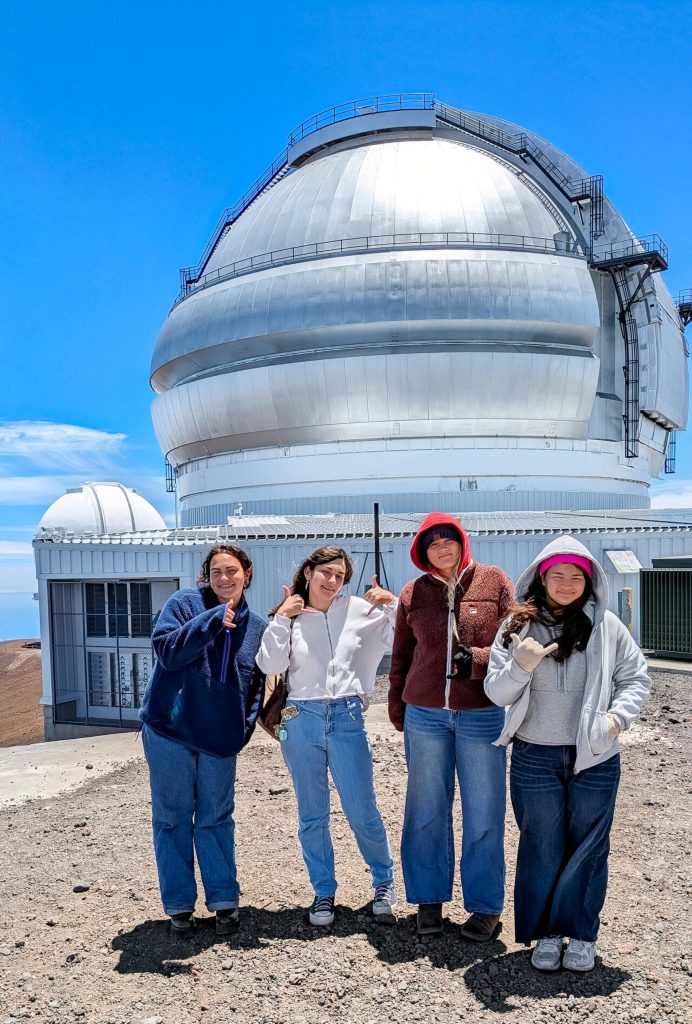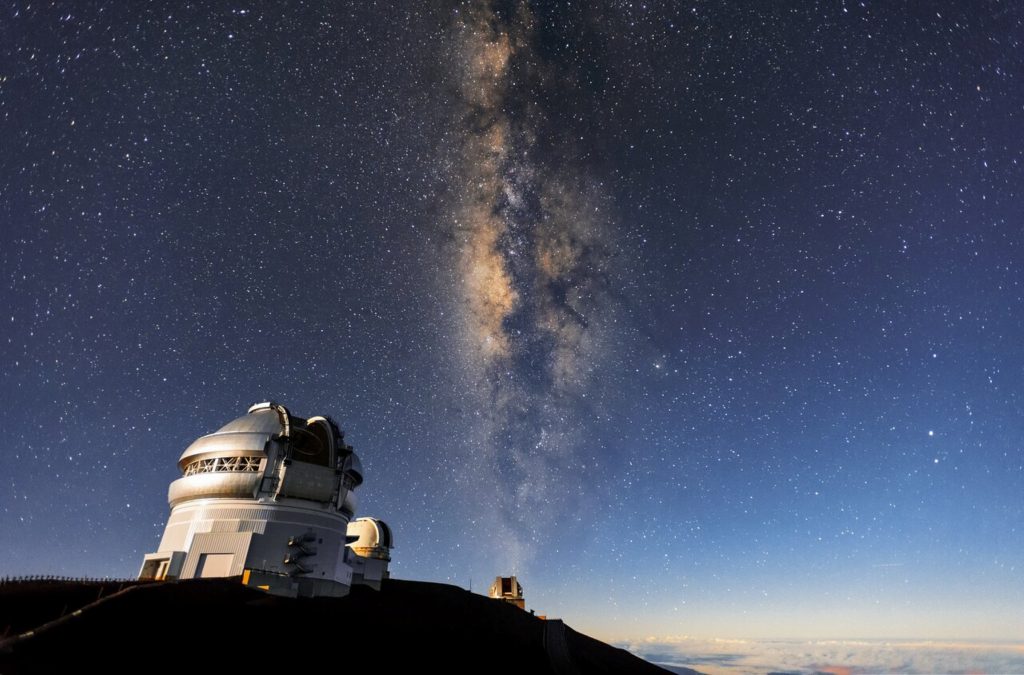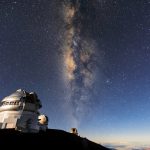Project Hōkūlani interns name mesmerizing Gemini 25th anniversary image Ua ʻŌhiʻa Lani
Four Hawaiʻi Island high school students in July — participants in the first Project Hōkūlani summer internship program hosted by the International Gemini Observatory — had the honor of naming one of two images to celebrate the 25th anniversary of the Gemini Observatory.
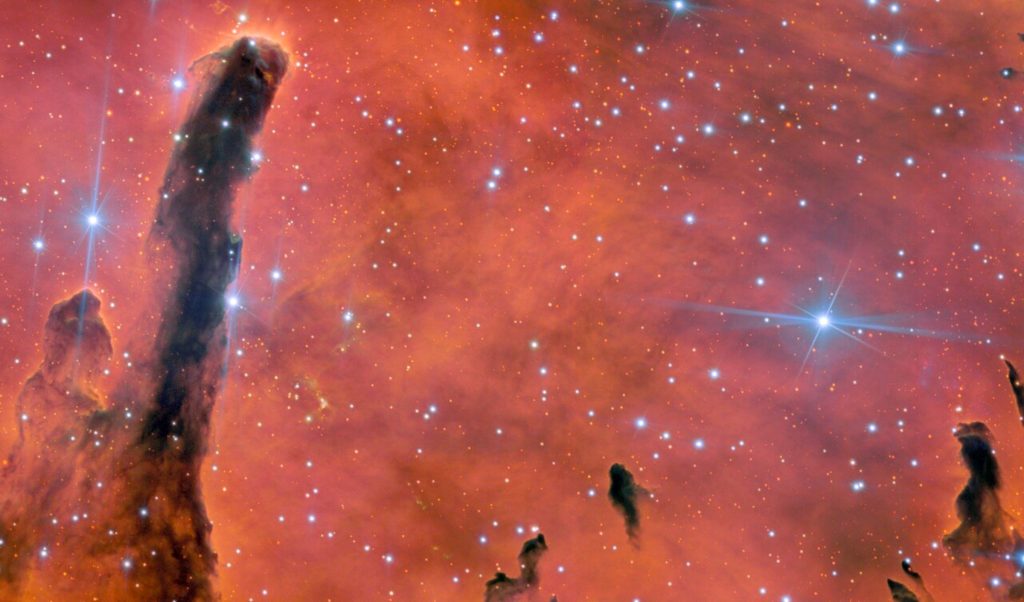
Inspired by a traditional Hawaiian story, they chose the name Ua ʻŌhiʻa Lani, which means the Heavenly ʻŌhiʻa Rains.
The image features the emission nebula NGC 6820, as well as its embedded open star cluster NGC 6823, captured in incredible detail by the Gemini North telescope located at the summit of Mauna Kea on the Big Island.
The Gemini North telescope celebrated first light in June 1999. The International Gemini Observatory was completed 25 years ago when its Southern Hemisphere twin, Gemini South, saw first light in November 2000.
“This image is crimson and red like lava because of the abundance of hydrogen gas present in the nebula,” explained Gemini intern Hope Arthur in a release about the image’s naming and Gemini’s 25th anniversary. “One of Pele’s most well-known stories is that of ʻŌhiʻa and Lehua. Their story is about regrowth after tragedy and the act of new beginnings, which we felt was evocative of the cycle of stellar life, death and rebirth.”
Selection of the anniversary image for Gemini Nort began with the Gemini First Light Anniversary Image Contest.
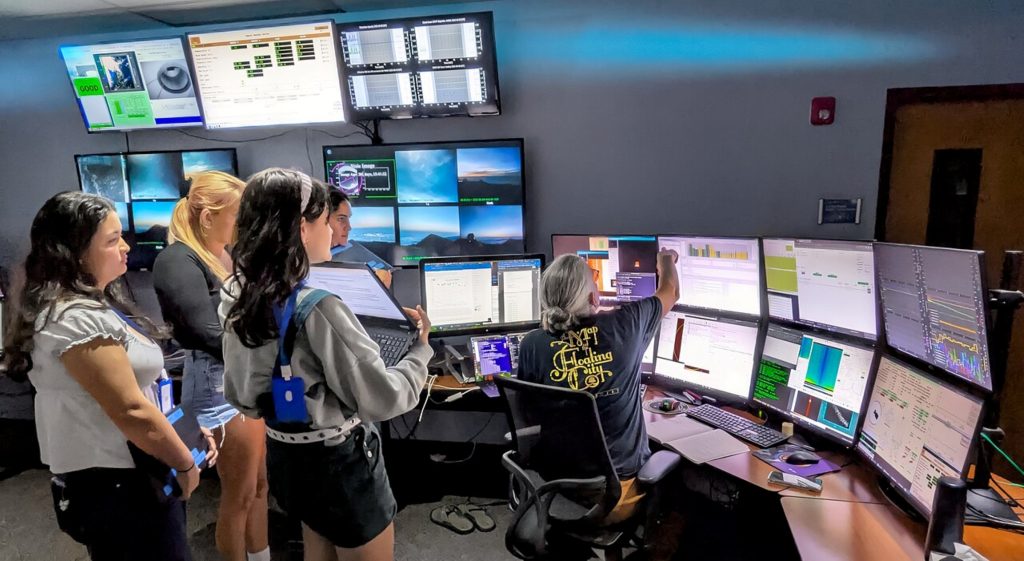
The contest engaged students in Hawai‘i and Chile — host locations of the Gemini telescopes — who learned about difference astronomical phenomena and then voted on which type of astronomical object each telescope should feature as its anniversary image.
The top contenders were then narrowed down by the four Project Hōkūlani students from Kamehameha Schools in Keaʻau and Parker School in Waimea on the Big Island, in partnership with CLD TEAMS at University of Hawaiʻi at Mānoa.
Interns Arthur, ‘Iolani Sanches, Zoe Russo and Isabella Branco researched the top four and presented their findings before reaching a group consensus on which astronomical object to image.
“It was so important to me that our interns gained a solid understanding of not just the astronomical science that takes place on Mauna Kea, but also the cultural and environmental significance of the mauna,” said Hawaiʻi education and engagement manager at Gemini North and internship mentor Leinani Lozi in the release. “The depth of their learning is evident in the name they created, and I’m so impressed and proud of them.”
The emission nebula NGC 6820 is located within the faint constellation Vulpecula, about 6,000 light-years — or about 35.3 quadrillion miles — away from Earth.
Vulpecula can be seen in the middle of the Summer Triangle: a famous asterism consisting of the bright stars Deneb, Vega and Altair. This area of the sky in Hawai‘i is known as Mānaiakalani, the Great Fishhook of Maui.
Emission nebulae are clouds of interstellar gas and dust that glow from being energized by ultraviolet radiation emitted by nearby stars.
The stars fueling NGC 6820’s emission are those of the open star cluster NGC 6823, seen in the image as scattered specks of blue-white light dotting the veil of red gas.
The intense radiation emitted by these hot, massive stars is blowing away the gas in the nebula, creating the dark, pillar-like structures seen emerging from the interstellar medium.
“The baby blue stars in the image reminded us of rain and how, in the story of ʻŌhiʻa and Lehua, when you pick the lehua blossoms, it rains,” said Sanches in the release. “The fact that these are all young stars and that we learned this story when we were children felt important.”
The students also engaged in telescope operations, the astronomical imaging process, visits to the summit of Mauna Kea, Native Hawaiian protocol for entering wahi pana (sacred spaces) and stargazing at the Mauna Kea Visitor Information Station and Liliʻuokalani Gardens in addition to the research and presentation portions of their internships.
These experiences introduced them to a variety of career options at observatories.
“I realized that we have so many science opportunities here, thanks to where we live,” said Russo in the release. “Project Hōkūlani has allowed us to dive deeper into our interests and make amazing connections. It’s a great way to become established in a field or try something new for a little bit.”



